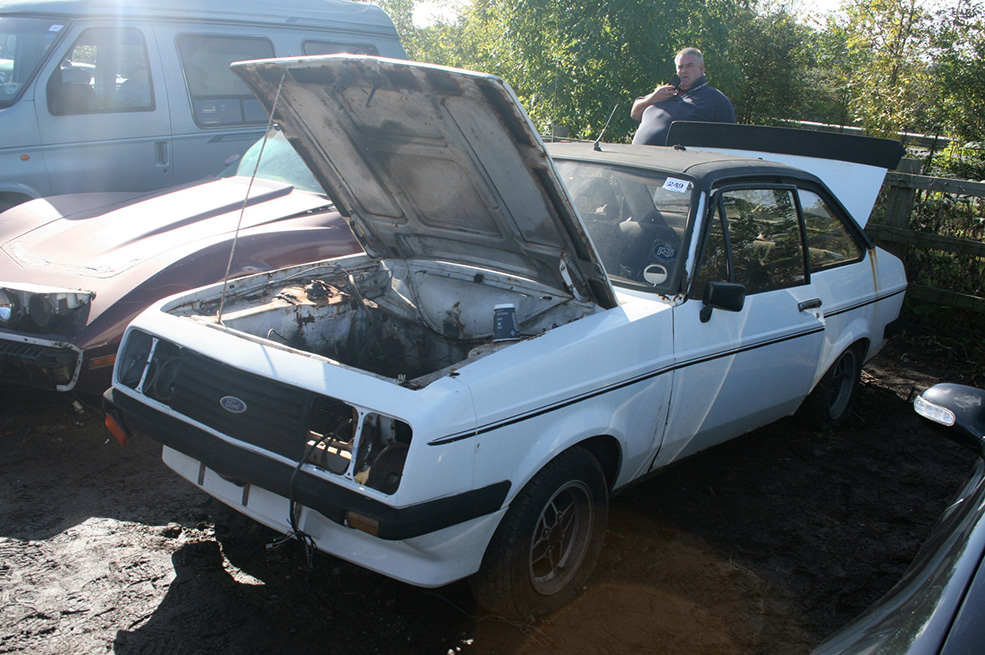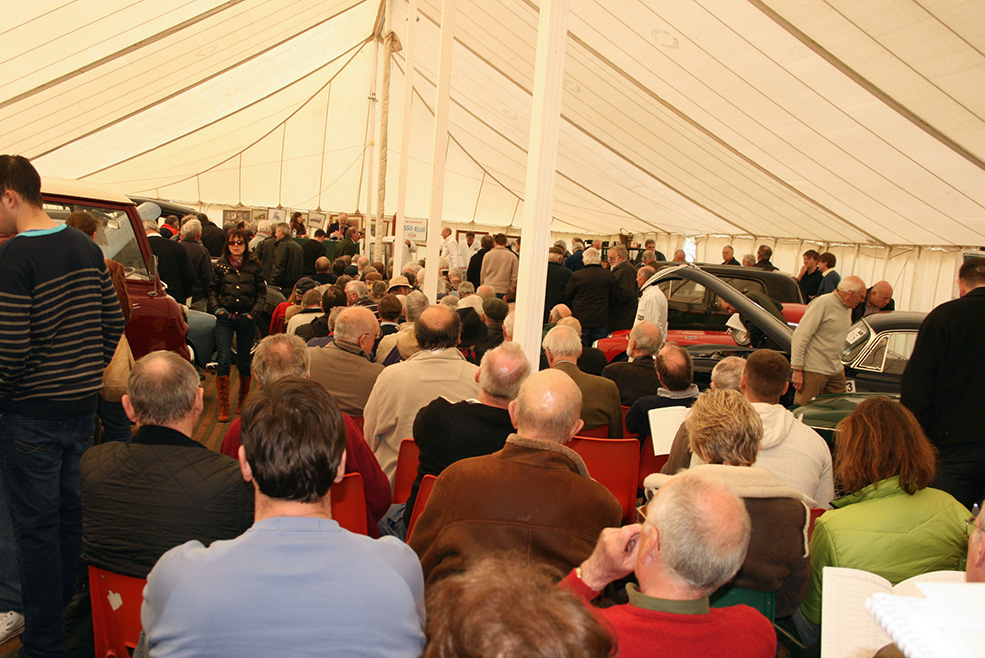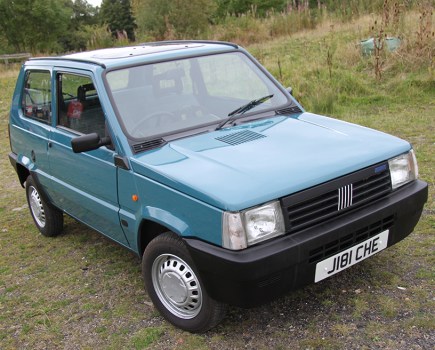Classic World’s Peter Simpson details buying a classic car at auction, a guide packed with tips, advice and help to secure that classic car at auction
I love classic car auctions. They’re exciting, fun places to be; you get to meet lots of characters and there’s always, of course, the chance on unearthing bargains. Over the years I’ve probably bought getting on for a thousand cars that way – albeit including a decade or so buying and selling professionally. You also get to choose from lots of cars all in one place – no traipsing round lots of private buyers looking at over-described junk…
Why sell at auction?
There are several reasons why a vendor might choose to sell at auction. Firstly, there are cars for which demand exceeds supply and which the seller thinks will sell for more if bidders compete. Then there are cars for which it’s hard to establish a value due to rarity etc. with the only way being to let the market decide. Some sellers also prefer an ‘arm’s length’ sale to dealing with buyers themselves, and others need a guaranteed sale and to be seen to have tried to get the best price possible on the day – an executors sale for example.
Finally, we have cars with defects that won’t show up in an auction environment – this can be a major fault or a series of minor ones. No reputable classic auction house will knowingly accept a car with a major fault unless it’s disclosed and if they hear of such a vehicle ‘slipping through’ it’s highly unlikely they’ll deal with that vendor again as no auction wants a name for selling bad cars. Lots of minor stuff is slightly different though; most classic auctions – even the top-flight companies – will also say they are selling collectors items rather than cars to be used. Consequently, unless something is directly contrary to a specific statement in the cars description, you’ve no comeback…

No Comeback!
That’s 100% legal, too. An auction is one of the few places where even traders can sell ‘as seen’ and with no comeback. Auctions are bound by some consumer legislation; they’re not allowed to say things in a description that are untrue, and they also have to indemnify customers who buy something that turns out to be stolen or otherwise not the seller’s property. This is normally paid for by the buyer as part of the Buyer’s Premium charged on top of your bid price. Don’t forget to factor this in; it can be up to 15% on top of your bid – plus VAT, as the premium is a charge by the auction and they will be VAT-registered.
Reserve Price
Most – but not all – classics sold at auction are subject to a reserve price, below which it won’t be sold. This will have been agreed between the seller and auction. Sometimes, though, a car will be offered without reserve. There are two likely reasons for this; one is that the car has to be sold – for example an executor’s or bankruptcy sale. Often, though, no reserve will be recommended by the auction house because cars which will definitely be sold, attracting more interest. Following this advice takes a bit of nerve for a seller, but does often work if your car is desirable.
Preparation
Visit at least two classic car auctions before buying. Watch what really happens, identify when cars are selling, and try to guess what they’ll make. The catalogue will usually contain price ‘estimates’. This is usually based around the reserve but an estimate is no guarantee the car will sell within that price range – sometimes an estimate is pitched low in the hope of attracting extra interest.
Then, if and when you are going to buy, you need to obtain and study the catalogue – ‘hard copy’ or online. Concentrate on what it says about that particular car rather than the model history. Just as importantly, though, be aware of what the catalogue doesn’t say. If, for example, there’s no mention of an Mot and the car needs one. Check online; it may not have one.

At the sale
Though most auctions offer ‘proxy’ or phone bidding and many now have online bidding enabling ‘absentee’ buyers to bid against live hall bidders, I recommend attending in person if possible so you can inspect cars properly. Just as importantly, you can’t judge the ‘mood’ of a sale unless you’re there. Check the car as thoroughly as you can – use all the buying guides. Ignore anything you may ‘overhear’ from other buyers. It’s a competitive buying environment, and all kinds of ‘tricks’ can be tried – vendors talking cars up, other bidders talking it down or letting you hear they plan to ‘bid high’ so you don’t bother etc. Ignore it all and decide for yourself.
After inspection, fix in your mind a maximum price, not forgetting the buyer’s premium. Tip here – most people set their limit at a round figure, so if you set yours at slightly more – say £5050 or “£5000 plus one bid” you’ve a better chance of outbidding them. Don’t, though, go over a pre-set figure…
The auctioneer’s role
Contrary to popular belief the auctioneer is not impartial; like any sales person he works for the seller. His first duty is to secure a sale. His second is to get the best possible price on the day.
There are legal restrictions on what he can do, but some things which are commonly thought illegal are not. For example, an auctioneer can bid ‘on behalf of the seller’ up to reserve. In practice, how far an auctioneer will go with this will depend on how much interest he thinks there is, how keen he thinks you are, how realistic and flexible he thinks the reserve is and generally what he thinks is the best way of encouraging a genuine bidder. And they’re extremely good at it!
Auctioneers should not, however, take non-existent bids AFTER reserve – and while I’m not saying it never happens if an auctioneer thinks someone will pay more, it’s not usually in the auctioneer’s interest to risk losing a sale for one more bid…

Bidding
Forget all the nonsense about people sneezing or blinking and having to buy a £200,000 car; the whole business is far too serious for that. The auctioneer won’t know you, so for your first bid he will need a clear signal such as a catalogue waved in the air. Do try to stand where you can’t be seen by other bidders, but you can see them.
For subsequent bids, the auctioneer will look back at you, and it is at this stage that you can give the less obvious signals. Don’t be too quick to counter bids – try to make it look as though you are thinking about each extra bid very carefully – and you might even let it get to ‘going twice’ before bidding. Don’t go over the top, though, as you may irritate the auctioneer into knocking it down to the other party.
One trick I sometimes use if bidding seems close to reserve and I’m probably the only live bidder is to make a bid and then turn to walk away. Most auctioneers take that as indicating a final bid. The risk, though is that someone else IS bidding and you lose it, or the auctioneer calls your bluff and takes another bid – in which case you’ve either got to stick with your ‘no’ and lose it, or eat humble pie!
You still need to think and act quickly when bidding online, too – when an auction phone handler asks ‘do you want another £200’, he or she needs a definite yes or no NOW, and once you decide, that’s it, you can’t change your mind. Likewise, when bidding online, though assuming your internet connection is good, clicking and the bid appearing should be instantaneous.

Outright or provisional?
If yours is the top bid, the car will either be sold outright, if bidding is over reserve. If, though, you were top bidder, but below reserve, it’ll be sold provisionally. Either way, a deposit will be required – cash or debit card is usual.
With a provisional, the auction will contact the seller, ask if the top bid is acceptable, and if it isn’t, try to ‘negotiate’ a compromise between him and you. These negotiations can be quite complex and often involve getting a bit of movement on both sides. Occasionally, if the two are close, the auction house will accept a slightly lower commission – no sale earns nothing; a reduced commission means they get something and the buyer’s premium. As when bidding, you need to decide quickly. Bear with the provisionals staff too, they are likely to be very busy with lots of ‘deals’ bubbling on sale day and will get to you as quickly as they can – don’t keep calling them, but make sure they can call you if needed.
Sometimes, a vendor with several cars entered won’t decide on provisionals until all have been through. That’s because he’s looking at the overall return and if one or more cars sell above reserve, he may accept a below-reserve bid on another.

Payment and collection
Payment terms vary from place to place, but you’ll need to pay in full in cleared funds before taking the car away. Debit cards shouldn’t be surcharged, but credit cards usually are – to cover the commission that the auction house has to pay the credit card company. Cash should be accepted up to the legal limit – currently just over £9000 – but nowadays some auctions will charge a cash handling fee. Cheques are normally accepted only from known customers.
You also need to think about collection – if the car isn’t roadworthy, you’ll need to trailer it, and even if you want to drive it you’ll need to tax and insure it. Bear in mind that where an auction rents a sale venue, the car will generally need to be gone by the end of the next day. If not, it’ll be taken to a local storage facility. This is often a breakdown/recovery yard, so besides being expensive, there’s also risk of accidental damage. Auctions may sometimes ‘help’ with transport, but that will rarely go beyond either their own transport operation or putting you in touch with a transport company – from there on, its all down to you.
Drawbacks
Auctions aren’t, though, for everyone. You need to be level-headed, unflappable and, above all, prepared to trust your own judgement. You also need to accept that auction buys are 100 per cent ‘cash and carry’; once the car is yours you must deal with everything yourself.
You don’t get to test-drive auction cars, either. I’m not here thinking just about assessing mechanical condition; you don’t get to discover if the car actually suits you. This could be an issue if you’re looking to buy a first classic or a car you like the look/idea of but have never driven. Don’t overlook this – although classics don’t generally get driven as much as modern cars, you still need to enjoy the experience…





